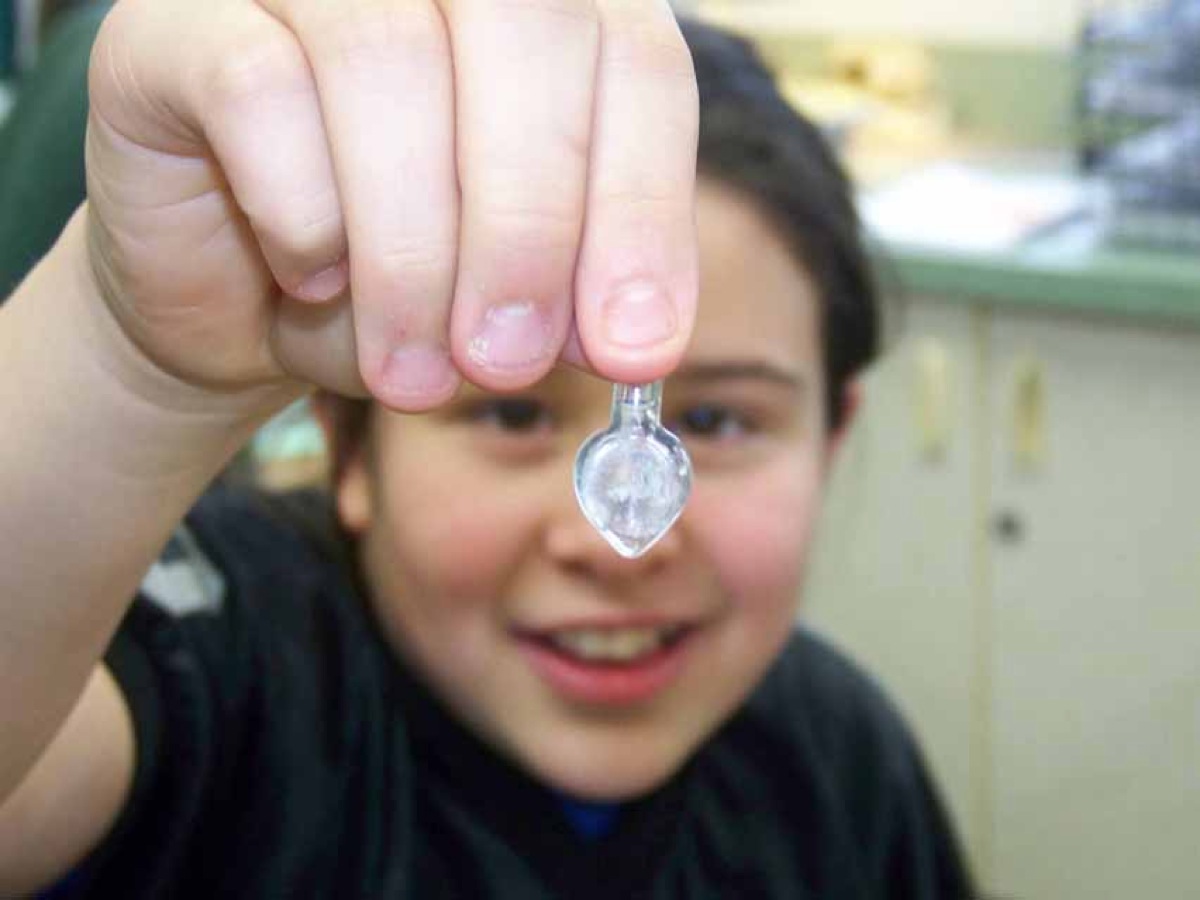The heart-shaped glass vials worn around the necks of sixth-graders at West Homer Elementary School weren’t just for decoration. Each one contained something uniquely special: the DNA of the student it was worn by. Even better, the students in Shirlie Gribble’s classroom extracted it themselves with the help of Homer High School science teacher Vicki Lowe and two HHS students, Drew Raymond and Maggie Graham. Lowe used cookies to help the youngsters understand the complexity of DNA, deoxyribonucleic acid. “I show the kids recipes of cookies and then show them the cookies. They make the link that DNA is like the recipe and cookies are sort of like them,” said Lowe. Simply put, a little manipulation of a cookie recipe and a peanut butter cookie becomes a chocolate chip cookie. Another change and it becomes an oatmeal cookie or maybe a sugar cookie. “That’s the idea that we’ll initially try to get across, that there is something in the DNA that instructs who they are,” said Lowe. To extract their own DNA, the students used cells from the inside of their cheeks added to water. In a test tube, the cells were broken down through a series of steps. Then the test tubes were placed for 10 minutes in a bath of warm water to encourage the process, cold alcohol was added, and – voila — after five minutes and a gentle mixing of each tube’s contents, a small, thick substance became visible: each student’s DNA. Taking it beyond cookie recipes, Lowe said the students’ understanding is “also really important and relevant in Alaska dealing with the Frankenfish issue.” A war against genetically modified fish, nicknamed Frankenfish, is being waged by Alaska’s congressional delegation in favor of wild fish caught in Alaska waters. “These kids are growing up in an age of (genetic modification), from the foods they eat to the medicines they use,” said Lowe. “They will be the policy makers of the future with biotechnology and I don’t think this is too early to start.” This is the second year Lowe has worked with Gribble, who welcomed her students’ introduction to biotechnology and chemistry, and the hands-on experience that expands learning beyond the pages of a textbook. “It also gets the students thinking about science and math at the high school level and the opportunities open to them,” said Gribble, adding that she also valued the involvement of the two high school students, “especially the fact that one was a female and that science and math are not just for males.” WHES teacher Suzanne Haines noted how the sixth-graders stayed attentive during each step of the hour-and-a-half lab. “The other best part, besides the knowledge, is that the kids are now excited about chemistry and will take that experience into middle and high school science,” said Haines. “Biotechnology is a huge field that’s growing by leaps and bounds, and (Lowe) has already introduced this fascinating study to the kids.” Inspiring students is exactly what Lowe had in mind. She used her hockey experience with the late Kevin Bell to illustrate the importance of connecting with youngsters at an early age. “I started playing hockey a few years ago and one of the guys who was instrumental in getting us started was Kevin Bell. He always said if you hook kids when they’re three or four years old, you’ve got them. I’ve brought that philosophy to science,” said Lowe. As a follow-up, the WHES students’ learning will be measured using pre- and post-lab assessments. “I also hope to mentor a student with a microbiology project for the upcoming WHES science fair,” said Lowe. Lowe’s participation in a University of Alaska Fairbanks program to train teachers in biotechnology resulted in a grant award to purchase equipment for the high school’s biotech lab and made possible the collaborative project between HHS and WHES. “I’m getting support on multiple levels to do this wonderful thing,” said Lowe, whose passion to teach bio-technology is multiplied by her eagerness to share science with students of all ages. McKibben Jackinsky can be reached at mckibben.jackinsky@homernews.com.
DNA lab: a recipe for learning



